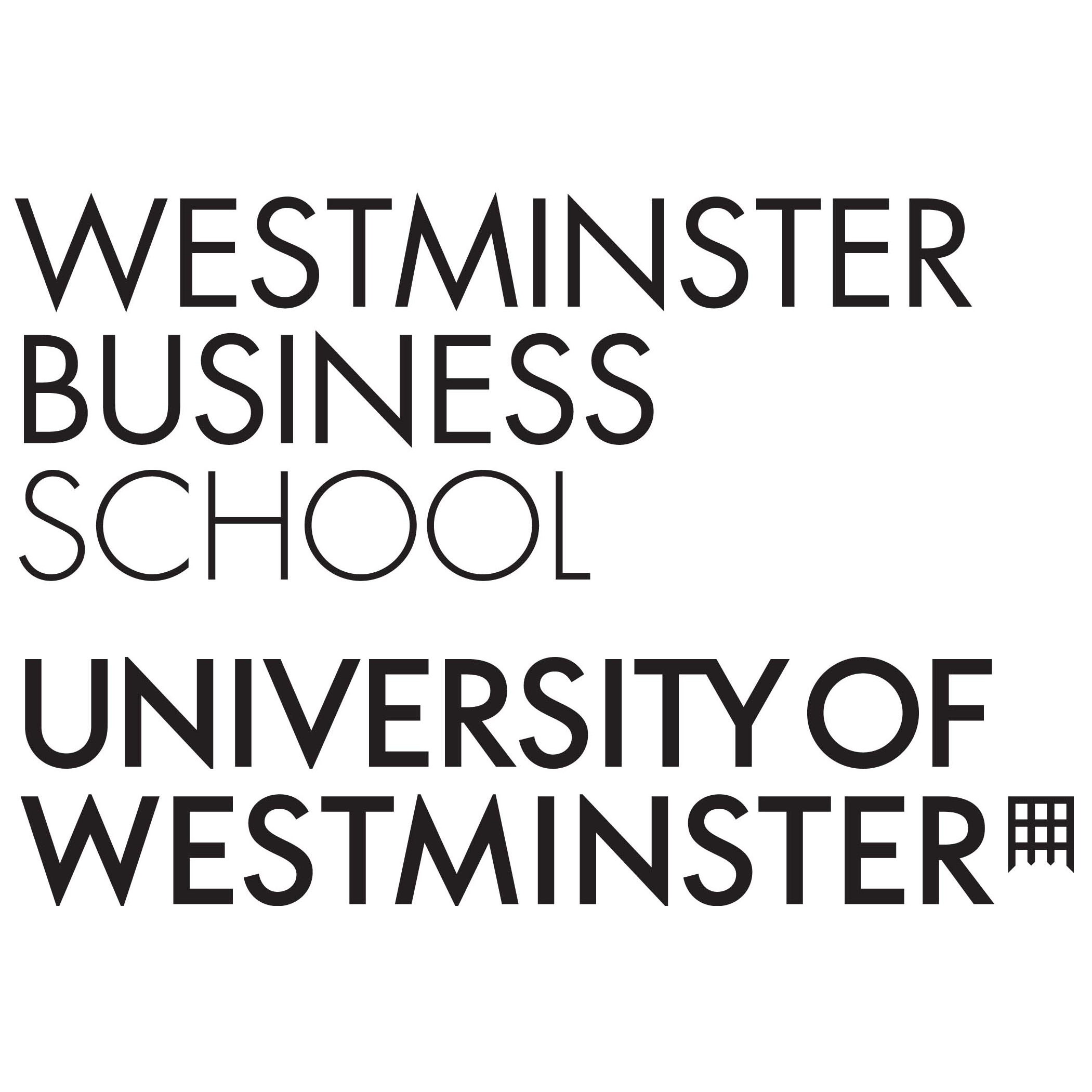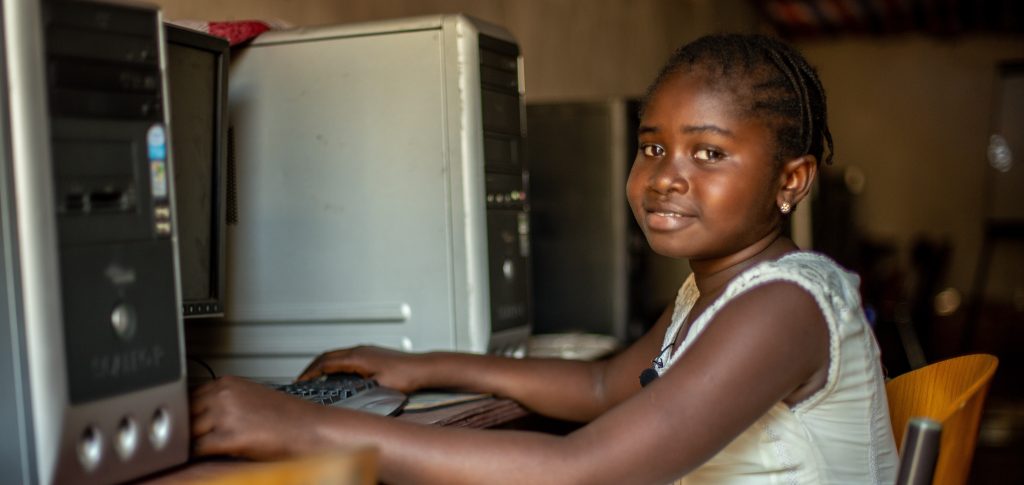
Sponsor a Gambian Girl (SaGG) is a non-profit organisation that seeks to empower girls and women in The Gambia through education. The organisation has four social media platforms: Facebook, Instagram, LinkedIn and Twitter. The purpose of these social media channels is to drive traffic towards their website and for visitors to take action in helping The Gambian girls.
- Social Listening
Social Media Audit
After analysing the social media channels of SaGG Foundation, the infographic below indicates the performance of the current social media initiatives.
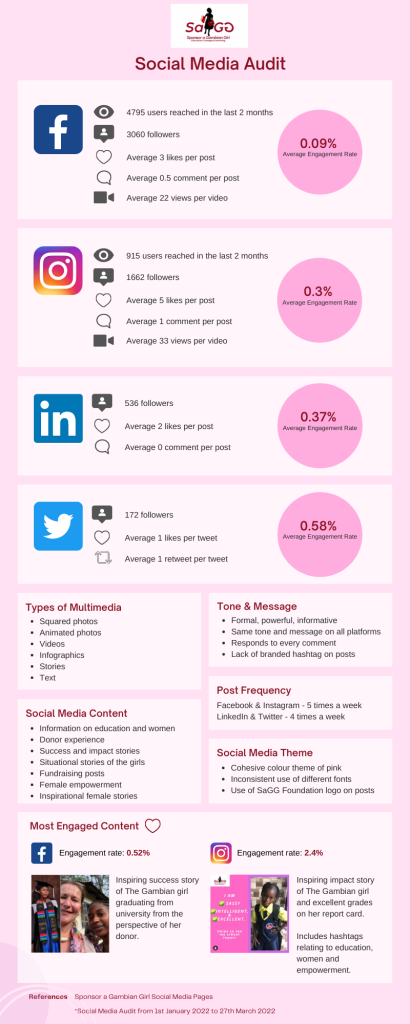
As seen above, the social media audit reveals little engagement on the SaGG Foundation posts. Average likes on posts range from 1 to 5 likes on the various channels. There are few to no comments made from followers with an average of one comment per post. The average engagement rate of SaGG Foundation is 0.09% for Facebook and 0.3% for Instagram, which is lower than the average benchmark for non-profit organisations. It is noteworthy that the SaGG Foundation responds to every comment on all channels.
In saying that, some posts stand out as successful in terms of larger engagement from the audience. The successful posts are centered around real stories of the Gambian girls or the experience of the donors. This can be derived that the audience prefers to view content that evokes emotions with genuine stories over informative content.
The metrics used to track the performance are reach, likes, comments, views and shares. Due to the limited information regarding social media analytics, the audit is unable to identify the performance of other metrics such as clicked links and unique website visitors.
Additionally, a social listening tool was employed to review mentions of the SaGG Foundation. However, it was reported that there were no mentions of the organisation from the audience. This could be due to the lack of a branded hashtag to promote communication with the organisation.
Overall, the performance of the social media initiatives can be determined as poor due to the following reasons.
1. Content
A discovery was made after analysing the content posted on the SaGG Foundation pages that the exact same content is being posted on various channels. Digital marketers have advised against the copy-and-paste approach as it is evident to be unsuccessful for many brands. This can impact the performance of the content as different platforms have a unique set of format criteria, strategies and algorithms. Instead, it is recommended that content should be crafted for each specific channel depending on how users consume content on those channels.
For example, the copy-and-paste approach used by SaGG Foundation has led to unfitting captions and tags which can seem unprofessional as shown below. The tags on the Facebook post are unavailable as the caption was curated for Instagram.
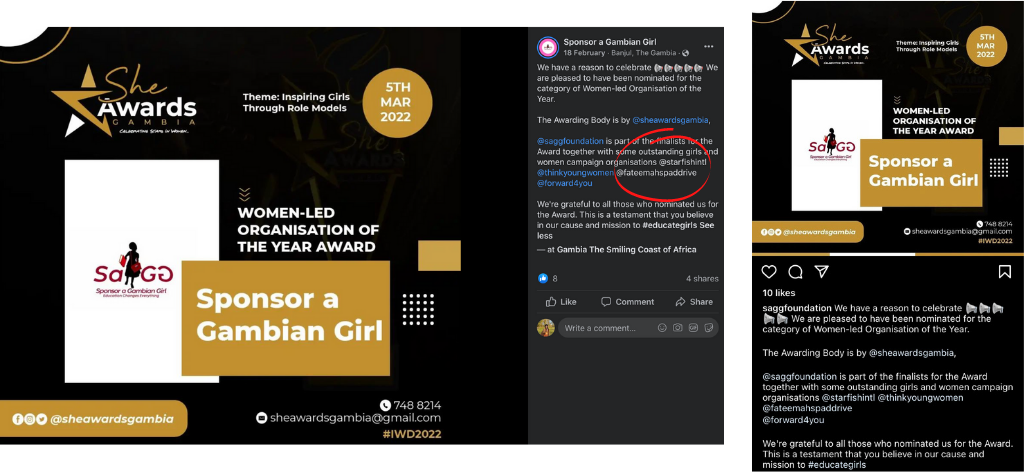
2. Tone
Another element that stood out during the audit was the tone of the social media posts.
Hootsuite Academy emphasised the importance of differentiating the voice of the brand and the tone used on different channels for a positive influence on the audience. The voice of the brand should reflect the brand and stay consistent. However, the tone used to convey the message can vary from one social media platform to another. For example, the tone used on LinkedIn should be formal and informative. Whereas the tone used on Instagram can be more playful and inspirational. Having the general message in mind for the content, the captions for each channel should vary. Using an inappropriate tone can obstruct how the followers covey the message and may hinder the action required from them.
However, the SaGG Foundation can improve its social media initiatives by using competitors as a benchmark.
Competitor Analysis
A competitor analysis was done to compare the performance of SaGG Foundation with similar charities to set a benchmark. The chosen charity for this analysis was Plan International. Similar to the SaGG Foundation, Plan International strive for children’s rights and equality for girls.
Plan International has six social media channels where they bring awareness to their charity and share stories from sponsors. A social media audit for Plan International is displayed in the infographic below.
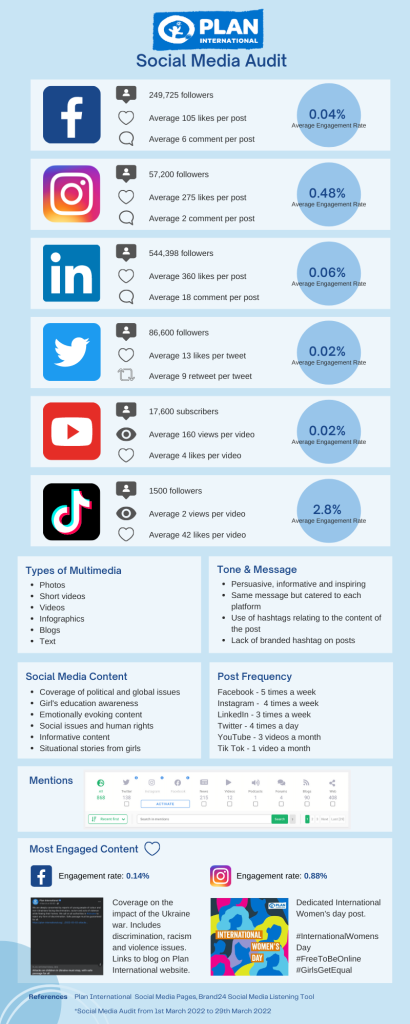
After reviewing the various social media channels, it was uncovered that their content is around activism, societal awareness and brand awareness. The contents are carefully curated to evoke the emotional appeal of the viewers. They also promote social and political causes such as the Ukraine War and Global Food Crisis. Their social media posts also direct traffic to their website through blogs covering various social causes. It can be derived that these blog posts assist in conversation as it leads viewers to their website.
A social listening audit revealed 868 mentions made in the last 30 days regarding Plan International. The social listening audit reveals that mentions of Plan International are mainly by donors and supporters that share their experience working with the organisation. The mentions are positive with compliments advocating the organisation. Overall, Plan International has a higher reach as evident from its number of followers.
Donor’s Demographic and Social Media Habits
To have a better understanding of how to curate social media content to drive engagement and action, a persona model has been created for SaGG Foundation. This aid in investigating the consumer’s social media usage and behaviour.
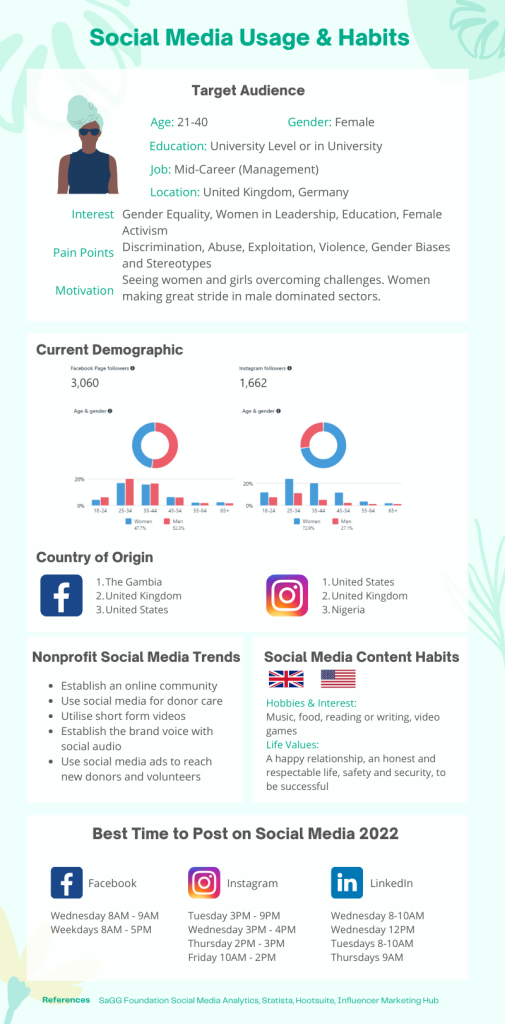
The current demographic of the audience was unveiled to be aligned with the target audience of SaGG Foundation.
Research by Statista has revealed the hobbies and interests of social media users from the United Kingdom and the United States. It also reveals their life values which can be useful in curating content to reach the audience emotionally and promote action.
Some of the recent social media trends for non-profit organisations in 2022 are as followed:
- Establish an online community – social media can be a useful platform to cultivate a sense of community with the donors and potential donors.
- Use social media for donor care – social media can be used to stay connected with donors to answer questions and monitor conversations about the organisation.
- Utilise short-form videos – this is a quick and easy way to share the story about the organisation in an interesting content format.
- Establish the brand voice with social audio – social audio is a great way to set the organisation as a thought leader in the industry by sharing stories and experiences.
- Use social media ads to reach new donors and volunteers – advertising on social media can be a great way to reach a new audience while keeping to your budget.
Additionally, research has shown the best timings to post on social media for non-profit organisations.
2. Social Media Goals
A social media audit is important to understand the performance of the current social media initiatives. The insight can determine whether the current employed social media initiatives are successful and pinpoint areas of improvement. Some of the recommended metrics are reach, engagement, clicks, web traffic and conversion. Another important aspect to consider is the demographic of your reach. If the current target audience is not in alignment with the organisation’s target segment, it could lead to fewer conversations. This could reflect poorly on the return on investment of the time and money spent. The simplest way of retrieving information regarding your social media initiative is through social media platform analytics. However, there are analytics tools such as HubSpot and Google Analytics that provide additional information.
Social listening and monitoring should also be done to understand how the audience perceives the organisation. This can help uphold public relations and the transparency of the organisation. Some examples of social listening tools are Hootsuite and Brand24.
In conclusion, SaGG Foundation should take into consideration the social media audit, competitor analysis, consumer behaviour and industry trends to develop a better social media approach to maximise its donations.
